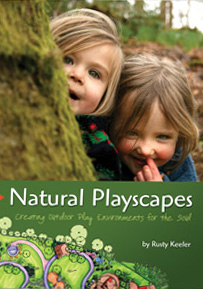ExchangeEveryDay Past Issues
 << Previous Issue
| View Past Issues | | Next Issue >>
<< Previous Issue
| View Past Issues | | Next Issue >> -Lisa Porter Kuh and Iris Chin Ponte, The Complementary Curriculum Approach
- "A 2007 study commissioned by the National Institute of Mental Health revealed that children labeled with ADHD undergo normal brain growth, but lag behind typical kids by an average of three years. This study and others suggest that these youngsters would be better described as late bloomers."
- The late anthropologist Ashley Montagu suggested that the more evolved a species, the more likely it is to retain qualities of childhood like curiosity, creativity, flexibility, and wonder into adulthood. It could be that children labeled with ADHD, with their lag in brain development, may actually be the leading edge in evolution."
- "Children (and adults) labeled with ADHD are actually very good at paying attention to what interests them. Many parents say their ADHD-diagnosed kids will spend hours focused on building with Legos®, dancing, playing video games, or engaging in other absorbing tasks. Unfortunately, the ADHD community calls this admirable trait 'hyperfocus' and negatively labels it as a 'warning sign' of ADHD."
- "A 2004 study published in the American Journal of Public Health found that ADHD symptoms were significantly reduced in children as young as 5 when they engaged with nature. Rough-and-tumble play also can be beneficial (particularly for boys). Jaak Panksepp, from Washington State University, has suggested that the increase in ADHD diagnoses in the United States may reflect that children 'no longer have adequate spaces and opportunities' to play each day."
|
Natural Playscapes |
|
Natural Playscapes: Creating Outdoor Play Environments for the Soul |
ExchangeEveryDay
Delivered five days a week containing news, success stories, solutions, trend reports, and much more.
What is ExchangeEveryDay?
ExchangeEveryDay is the official electronic newsletter for Exchange Press. It is delivered five days a week containing news stories, success stories, solutions, trend reports, and much more.




Comments (2)
Displaying All 2 CommentsDimensions Educational Research Foundation
Lincoln, Nebraska, United States
Thank you for dispensing this essential information. I teach brilliant, sensitive, gregarious 3,4,and 5 year old children that don't fit any mold no mater how much others want them to. I think they are very evolved and certainly they have unique talents that make it impossible and inappropriate for them to sit and listen much of the time. Often we want children to know their place. That is really a fear based notion. We all need to respect one another, and that is done only through long term modeling and encouragement. "Teaching" my children is often a struggle. So often their sensitivities are really offended by our preconcieved notions of what they need.
Shishu Vikash Kendra
Kolkata, West Bengal, India
Hello
Child friend , Play and adequate enjoying environment can cure ADHD .
Post a Comment